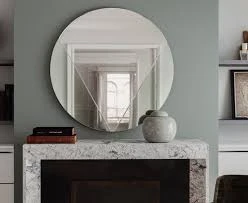

The Significance of Green Float Glass in Modern Construction
Green float glass is an essential material in contemporary construction and design, valued not only for its aesthetic appeal but also for its functional properties. Created through the float glass process, this type of glass features a distinct green hue that originates from the iron oxide content in the raw materials used during production. The unique coloring, coupled with remarkable features, makes green float glass a preferred option for various applications, particularly in architecture and interior design.
One of the most significant advantages of green float glass is its energy efficiency. When used in buildings, this glass can contribute to the overall energy conservation strategies employed in modern architecture. The green tint helps to reduce solar heat gain, thereby assisting in maintaining comfortable indoor temperatures. This characteristic is especially beneficial in regions with intense sunlight, where buildings can become uncomfortably hot. By minimizing the reliance on air conditioning systems, green float glass aids in reducing energy consumption and promotes sustainability.
Furthermore, the aesthetic qualities of green float glass enhance the visual appeal of structures
. Its soothing hue harmonizes well with a variety of design elements, making it a versatile choice for both exterior and interior applications. Architects and designers often leverage the color and clarity of green float glass to create striking facades, glass walls, and windows that contribute to a building's overall character. The transparency of the glass allows for ample natural light to flood interior spaces while providing an unobstructed view of the surroundings. This connection with the outdoors promotes a positive ambiance and well-being for the occupants.
In addition to its functional and aesthetic benefits, green float glass is also durable and low-maintenance. Once installed, it requires minimal upkeep compared to other materials, making it an economically advantageous choice for property developers and homeowners. Its resistance to weathering and UV rays ensures that the glass maintains its color and clarity over time, further solidifying its position as a go-to material in construction.
Moreover, green float glass can be processed further to enhance its properties. Techniques such as laminating and tempering improve safety and thermal performance, making it suitable for various applications, from commercial buildings to residential homes. The ability to adapt the glass for specific uses expands its applicability and appeal within the industry.
Despite its advantages, it is essential to consider the environmental impact of glass production and strive for sustainable manufacturing practices. The industry has made significant strides in this area, with many manufacturers adopting greener technologies and recycling initiatives aimed at reducing waste and energy use. As the world increasingly prioritizes sustainability, the demand for eco-friendly materials like green float glass is anticipated to rise.
In conclusion, green float glass represents a perfect blend of aesthetics, functionality, and sustainability. As architects and designers continue to seek innovative materials for modern construction, green float glass stands out as a top choice, offering a range of benefits that meet the demands of contemporary living while respecting the environment.